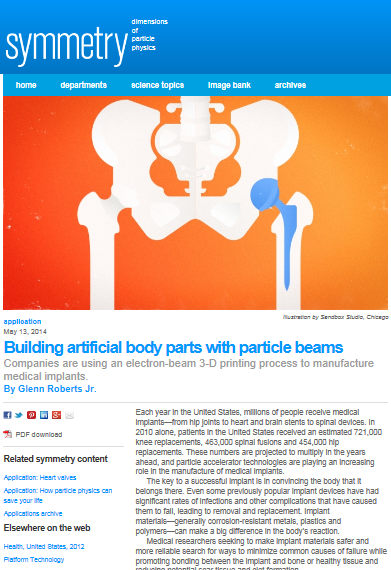From Symmetry Magazine, 13 May 2014
Each year in the United States, millions of people receive medical implants—from hip joints to heart and brain stents to spinal devices. In 2010 alone, patients in the United States received an estimated 721,000 knee replacements, 463,000 spinal fusions and 454,000 hip replacements. These numbers are projected to multiply in the years ahead, and particle accelerator technologies are playing an increasing role in the manufacture of medical implants.
The key to a successful implant is in convincing the body that it belongs there. Even some previously popular implant devices have had significant rates of infections and other complications that have caused them to fail, leading to removal and replacement. Implant materials—generally corrosion-resistant metals, plastics and polymers—can make a big difference in the body’s reaction.
Medical researchers seeking to make implant materials safer and more reliable search for ways to minimize common causes of failure while promoting bonding between the implant and bone or healthy tissue and reducing potential scar tissue and clot formation.
Researchers have discovered that the microscopic composition and texture of an implant—even features just tens of atoms deep—can make a big difference in implant biocompatibility. Read more >>

